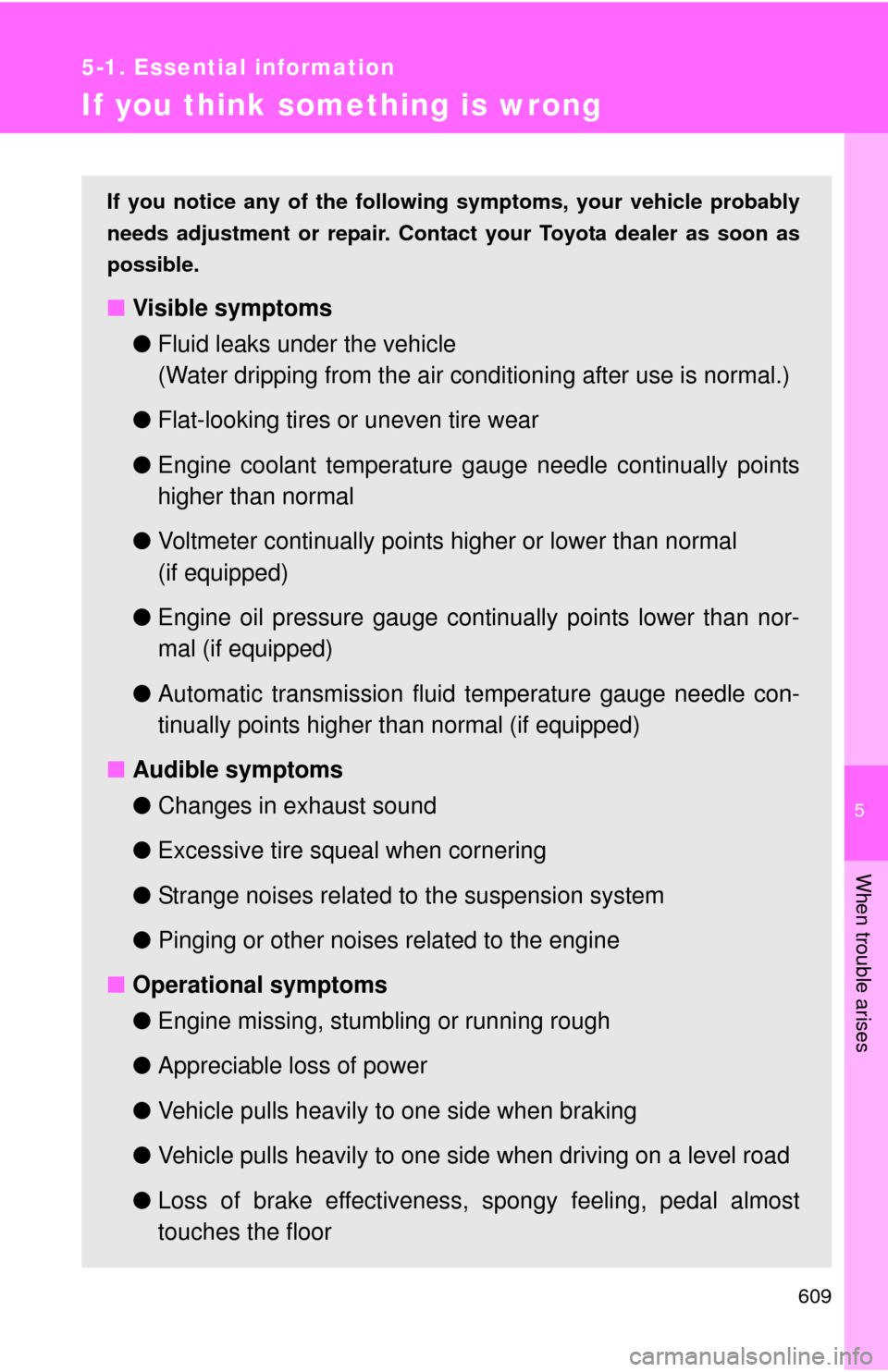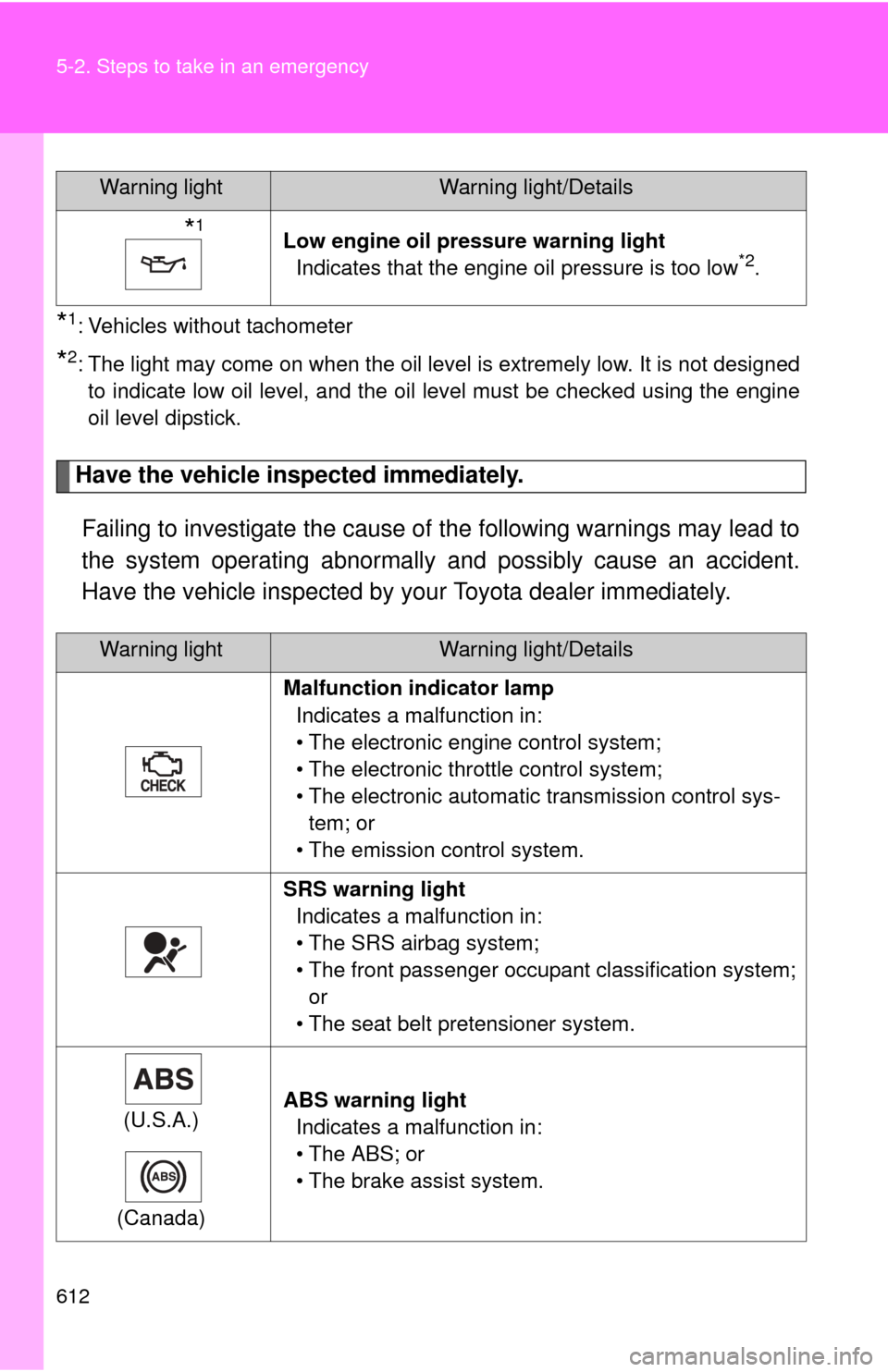2013 TOYOTA TUNDRA transmission oil
[x] Cancel search: transmission oilPage 192 of 752

192 2-2. Instrument cluster
Fuel gauge
Displays the quantity of fuel remaining in the tank.
Voltmeter (if equipped)
Displays the charge state.
Engine oil pressure gauge (if equipped)
Displays the engine oil pressure.
Engine coolant temperature gauge
Displays the engine coolant temperature.
Odometer/trip meter switching and trip meter resetting button
Switches between odometer and trip meter displays. Pushing and hold-
ing the button will reset the trip meter when the trip meter is being dis-
played.
Odometer/trip meter
Odometer:
Displays the total distance the vehicle has been driven.
Trip meter:
Displays the distance the vehicle has been driven since the meter was
last reset. Trip meters A and B can be used to record and display differ-
ent distances independently.
Automatic transmission fluid temperature gauge (if equipped)
Displays the automatic transmission fluid temperature.
Page 194 of 752

194 2-2. Instrument cluster
Instrument panel light controlThe brightness of the instrument panel lights can be adjusted.
Brighter
Darker
Vehicles with multi-information
display
With the dial turned fully up, the
intensity of the instrument panel
lights will not be reduced even
when the tail lights/headlights are
turned on.
NOTICE
■To prevent damage to the engine and its components
●Do not let the indicator needle of the tachometer enter the red zone, which
indicates the maximum engine speed.
● The engine may be overheating if the engine coolant temperature gauge is
in the red zone (H). In this case, immediately stop the vehicle in a safe
place, and check the engine after it has cooled completely. ( P. 654)
■ While driving
●When the voltmeter indicates more than 19 V or less than 9 V, the battery
may be malfunctioning. Have your vehicle checked at your Toyota dealer.
● When the engine oil pressure gauge does not work properly, immediately
stop the engine and contact your Toyota dealer.
● When the automatic transmission fluid temperature gauge needle continu-
ally points higher than normal, immediately contact your Toyota dealer. (if
equipped)
Page 261 of 752

261
2-5. Driving information
2
When driving
NOTICE
■
To prevent the water damage
●Take all necessary safety measures to ensure that water damage to the
engine or other components does not occur.
● Water entering the engine air intake will cause severe engine damage.
● Water entering the automatic transmission will cause deterioration in shift
quality, locking up of your transmission accompanied by vibration, and ulti-
mately damage.
● Water can wash the grease from wheel bearings, causing rusting and pre-
mature failure, and may also enter the differentials, transmission and
transfer case, reducing the gear oil’s lubricating qualities.
■ When you drive through water
If driving through water, such as when crossing shallow streams, first check
the depth of the water and the bottom of the river bed for firmness. Drive
slowly and avoid deep water.
■ Inspection after off-road driving
●Sand and mud that has accumulat ed in brake drums and around brake
discs may affect braking efficiency and may damage brake system compo-
nents.
● Always perform a maintenance inspection after each day of off-road driv-
ing that has taken you through rough terrain, sand, mud, or water. For
scheduled maintenance information, refer to the “Scheduled Maintenance
Guide” or “Owner’s Manual Supplement”.
Page 609 of 752

5
When trouble arises
609
5-1. Essential information
If you think something is wrong
If you notice any of the following symptoms, your vehicle probably
needs adjustment or repair. Contact your Toyota dealer as soon as
possible.
■ Visible symptoms
●Fluid leaks under the vehicle
(Water dripping from the air cond itioning after use is normal.)
● Flat-looking tires or uneven tire wear
● Engine coolant temperature g auge needle continually points
higher than normal
● Voltmeter continually points higher or lower than normal
(if equipped)
● Engine oil pressure gauge continually points lower than nor-
mal (if equipped)
● Automatic transmission fluid temperature gauge needle con-
tinually points higher than normal (if equipped)
■ Audible symptoms
●Changes in exhaust sound
● Excessive tire squeal when cornering
● Strange noises related to the suspension system
● Pinging or other noises related to the engine
■ Operational symptoms
●Engine missing, stumbling or running rough
● Appreciable loss of power
● Vehicle pulls heavily to one side when braking
● Vehicle pulls heavily to one side when driving on a level road
● Loss of brake effectiveness, s pongy feeling, pedal almost
touches the floor
Page 612 of 752

612 5-2. Steps to take in an emergency
*1: Vehicles without tachometer
*2: The light may come on when the oil level is extremely low. It is not designedto indicate low oil level, and the oil level must be checked using the engine
oil level dipstick.
Have the vehicle inspected immediately.
Failing to investigate the cause of the following warnings may lead to
the system operating abnormally and possibly cause an accident.
Have the vehicle inspected by your Toyota dealer immediately.
Warning lightWarning light/Details
*1Low engine oil pressure warning light
Indicates that the engine oil pressure is too low*2.
Warning lightWarning light/Details
Malfunction indicator lamp Indicates a malfunction in:
• The electronic engine control system;
• The electronic throttle control system;
• The electronic automatic transmission control sys-tem; or
• The emission control system.
SRS warning light Indicates a malfunction in:
• The SRS airbag system;
• The front passenger occupant classification system; or
• The seat belt pretensioner system.
(U.S.A.)
(Canada) ABS warning light
Indicates a malfunction in:
• The ABS; or
• The brake assist system.
Page 680 of 752

680 6-1. Specifications
Automatic transmission
*: The fluid capacity is the quantity of reference. If replacement is necessary,contact your Toyota dealer.
Transfer (4WD models)
Fluid
capacity*
4.0L V6 (1GR-FE) engine 11.1 qt. (10.5 L, 9.2 Imp.qt.)
4.6L V8
(1UR-FE)
engine
Vehicles without
towing package2WD models
11.6 qt. (11.0 L, 9.7 Imp.qt.)
4WD models
11.3 qt. (10.7 L, 9.4 Imp.qt.)
Vehicles with
towing package2WD models
12.2 qt. (11.5 L, 10.1 Imp.qt.)
4WD models
11.8 qt. (11.2 L, 9.9 Imp.qt.)
5.7L V8
(3UR-FE,
3UR-FBE)
engineVehicles without
towing package
11.7 qt. (11.1 L, 9.8 Imp.qt.)
Vehicles with
towing package12.3 qt. (11.6 L, 10.2 Imp.qt.)
Fluid type
Toyota Genuine ATF WS
NOTICE
■Automatic transmission fluid type
Using automatic transmission fluid other than “Toyota Genuine ATF WS”
may cause deterioration in shift quality, locking up of your transmission
accompanied by vibration, and ultimately damage the automatic transmis-
sion of your vehicle.
Oil capacity 1.2 qt. (1.12 L, 1.0 Imp.qt.)
Oil typeGear oil API GL-4 or GL-5
Recommended oil viscosity SAE 75W-90
Page 745 of 752

745
Alphabetical index
Vanity lights
Vanity lights .......................... 489
Wattage ................................ 684
Vanity mirrors .......................... 489
Vehicle data recordings............ 37
Vehicle identification number................................... 672
Vehicle stability control .......... 249
VSC ........................................... 249
Warning buzzers
Brake system........................ 611
Key reminder .................. 53, 617
Open door .................... 613, 616
Seat belt reminder ........ 613, 616
Warning lights
ABS ...................................... 612
Airbag system....................... 612
Anti-lock brake system ......... 612
Automatic transmission fluid temperature ................ 612
Brake assist system ............. 612
Brake system........................ 611
Charging system .... .............. 611
Driver’s seat belt................... 613
Electronic engine control
system................................ 612
Engine oil pressure............... 611
Four-wheel drive system
warning buzzer................... 617
Front passenger occupant
classification system .......... 612
Front passenger’s seat belt ............................. 613 Low brake fluid ......................611
Low engine oil pressure ........611
Low fuel level ................613, 623
Low tire inflation
pressure ..............................613
Malfunction indicator lamp ....612
Master warning light ..............613
Open door .............................613
Power steering warning light .....................................612
Pretensioners ........................612
Seat belt reminder light .........613
SRS airbags ..........................612
Tire pressure warning light ....613
VSC/TRAC ............................612
Warning messages ..................622
Washer Checking ...............................557
Preparing and checking before winter .......................268
Switch....................................217
Washing and waxing ...............528
Weight Cargo capacity ......................266
Cargo weight rating ...............723
Gross axle weight rating........727
Gross vehicle weight rating ...................................727
Load limits .............................266
Towing capacity ....................669
Trailer Weight Rating ....277, 669
TWR ..............................277, 669
Vehicle capacity weight .........666
Weight ...........666, 669, 723, 727V
W
Page 750 of 752

750 What to do if...
■Warning lights
P. 613
or(if equipped)
P. 611 P. 612
P. 611 P. 616
P. 612 P. 613
P. 614
or
P. 6 1 2P. 613
P. 6 1 5P. 615
P. 6 1 2P. 613
P. 6 1 4P. 613
*: Slip indicator comes on.P. 6 1 5
Brake system warning
lightPower steering warning
light
Low engine oil pressure
warning light
Charging system
warning lightMaster warning light
Malfunction indicator
lampSlip indicator*
ABS warning lightTire pressure warning
light
Open door warning light
Maintenance required
reminder lightLow fuel level warning
light
SRS warning lightDriver’s seat belt reminder
light
Front passenger’s seat belt
reminder light
Low washer fluid
warning light
Automatic transmission
fluid temperature
warning light
The warning message is displayedP. 622If a warning message is displayed